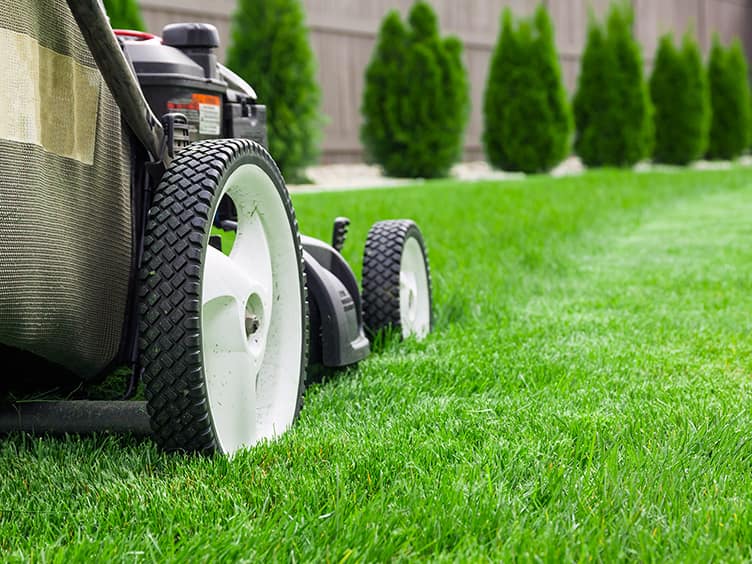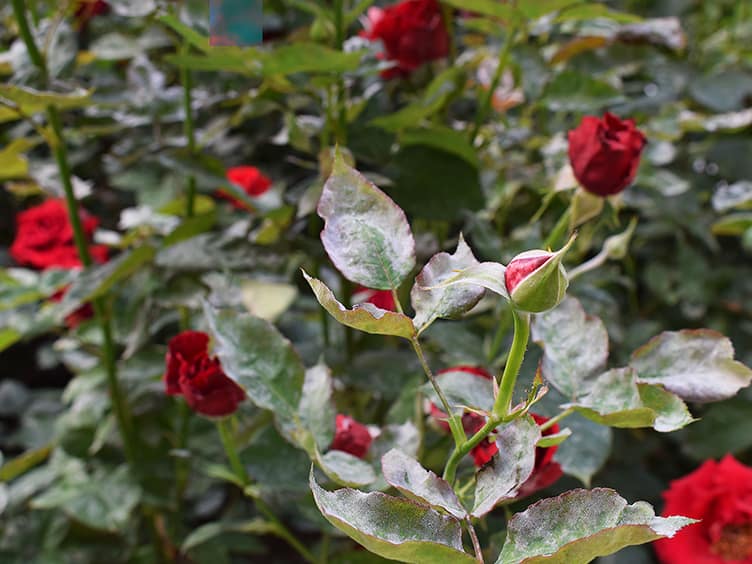Chilli
It seems that most people now have at least 1 or 2 chilli plants at home – it’s become incredibly trendy. Growing...

The spring garden is at its absolute best now, with trees, shrubs, perennials and seasonal annuals all flowering, fruit trees and vegetables showing the promise of crops to come and the lawn lush and green. It could be a time to sit back and rest on your laurels, enjoying the rewards of the hard yards you’ve done throughout the year, but...
There’s still work to be done to prepare your garden for the long and most likely hot summer ahead. Feeding and watering are paramount this month. So too is repotting of indoor plants, orchids and other plants in larger pots and tubs. In cooler mountain and hills areas, rhododendrons and azaleas are at their very best.
It seems that most people now have at least 1 or 2 chilli plants at home – it’s become incredibly trendy. Growing...
Delicious in salads and sandwiches, the crisp, sweet crunch of a cucumber is one of the joys of summer. Growing...
Spring onions (also known as green shallots and green bunching or salad onions) are a delicious addition to a whole...
Nothing beats the taste of your own home-grown tomatoes, freshly picked and warm from the summer sun. Slice them into a...
The basis of so many delicious dishes, onions (Allium cepa) are an essential ingredient in every cook’s store cupboard...
Zucchini are now a common, summer staple in the vegetable garden. They are relatively easy to grow and they can be eaten...
Runner beans, or more correctly scarlet runner beans, (Phaseolus coccineus) are among the easiest and most rewarding...
Bags of salad leaves are quite expensive to buy and have a fairly short lifespan in the fridge. Grow your own salad...
Delicious in pies, soups and stews and full of vitamins and minerals, pumpkins are a tasty autumn and winter treat...
Sweet Corn, or maize, won't really grow as high as an elephant's eye, but it will be sweet, tender and delicious -...
Asparagus is a classic spring vegetable worth establishing in your garden. You’ll need to wait 2 years from planting...
Rhubarbs edible stalks grow from a central crown and this popular vegetable is most commonly eaten as a sweet! Once...
Spinach is rich in iron, fibre and other essential vitamins and this easy to grow veg is ready to harvest, leaf by leaf...
Kale is an easy to grow leafy vegetable that has become popular thanks to its superfood status because it’s rich in...
Silverbeet is also commonly referred to as Swiss chard, chard or rainbow chard. The rainbow variety has brightly...
Ginger is a tasty and easy spice to grow in your own garden. Tropical and subtropical gardeners can grow ginger year...
Avocado trees, once established, are very productive, beautiful evergreen trees that will supply you with plenty of...
Beetroot is the ultimate vegetable to grow for root-to-tip eating! Its young tender leaves can be eaten raw in salads or...
Celery can be a fussy vegetable to grow, it doesn’t like it too hot or too cold! But once you’ve got it growing happily...
Watercress is a peppery, nutrient-rich leafy green that’s delicious on sandwiches and in salads. It’s easy to grow in...
Eggplants are a heat-loving, productive and home garden-friendly crop to grow. They love a full sun spot and will...
Capsicums add crunch, colour and nutrients to many dishes including salads, casseroles, stir fries and roasts. Capsicums...
Sweet potatoes rambling vines grow tubers beneath the ground. These vigorous and productive vines can be grown in a...
Beans are a bountiful plant to have in your vegetable garden, they are easy to grow and heavy croppers. You can find...
Radishes are one of the easiest and speediest vegetable crops to grow! Perfect for the time poor or beginner gardener...
Leeks are a sweet and mild member of the onion family. They thrive in cold and warm temperate climates but can be...
Globe artichoke (Cynara scolymus) are thistle like plants that produce edible flowers - harvested and eaten in their bud...
Fennel or Florence Fennel (Foeniculum vulgare dulce) produces crisp white bulbs, topped with fern like fronds - all...
Horseradish is a vigorous plant related to broccoli, cabbage and kale - but unlike its brassica cousins, horseradish is...
Squash or patty pan squash as they are often called - because of their UFO like shape - are an easy to grow summer...
Parsnips are a nutty and sweet root vegetable that can take 5-6 months to reach maturity! But the flavour of homegrown...
Shallots ( Allium cepa var. aggregatum) are a member of the onion family loved by chefs and home cooks for their mild...
Lettuce is an easy to grow, staple leafy green that can be easily grown year round. You can grow lettuce quickly from...
Okra, also known as Lady’s Fingers or Gumbo, produces long pod-shaped fruit that can be used in stews, curries and stir...
Taro is a staple crop in many pacific countries that produces an edible white tuber beneath the ground. The starchy taro...
Carrots are an easy to grow, staple vegetable that’s worth including in your garden. They’ll happily grow in a full sun...
Snow peas are heavy croppers that are easy to grow in home veggie beds or potted gardens. Snow peas flat pods can be...
Turnip are a fast and easy to grow root crop that’s related to other broccoli, cabbage and other brassicas. Although...
Yam (Dioscorea sp.) is an ancient food crop grown in tropical and subtropical climates as an alternative to potatoes...
Who doesn’t love strawberries? If you’re a strawberry fan, there are many varieties easy to grow at home, allowing you...
What could be better than a bowl of sweet, fresh-picked raspberries in summer? These delicious fruits are easy to grow...
Chokos are an old-fashioned crop that’s making a comeback! Once upon a time, these vigorous vines covered pergolas...
Dragon fruit grows on a climbing cactus that produces stunning white flowers in summer. These flowers develop into pink...
Mangoes are the classic summer fruit, loved for their sweet and juicy flesh. Mango trees thrive in tropical and...
Passionfruits are a popular and productive vine that will grow in most climates around Australia. They particularly...
Pineapples are an easy care tropical fruit, that will also grow in other frost-free climates around Australia too...
Lychee fruit grow on medium to large evergreen trees that love growing in subtropical and tropical climates. They love a...
Paw Paw or Papaya (Carica papaya) originate from tropical and subtropical climates, so they thrive in warm, frost free...
Mulberry trees are a fast and easy to fruiting plant for every home garden! You’ll rarely find mulberries at the...
Gooseberries (Ribes uva-crispa) are native to parts of Europe, but they’ll happily grow in the cooler parts of southern...
Orchids are a great addition to any home, with their exotic, delicate and diverse flowers and their beautiful shapes and...
If you want to grow something spectacular, plant sunflowers. They come in a whole range of sizes from dwarf to giant and...
Alliums belong to the same family as onions, garlic and leeks, as you can tell from the aroma when you crush the foliage...
Roses are among our favourite garden plants – and deservedly so. They are versatile, produce vibrant colour through...
The sweet pea (Lathyrus odoratus) is an incredibly popular flowering climbing plant that produces masses of flowers from...
Lavender is a beautiful, fragrant small shrub perfect for cottage gardens, perennial borders and pollinator patches...
Dahlias produce colourful blooms throughout summer and well into autumn in Australia. Their flowers can be big and...
Azaleas have the power to fill winter and spring gardens with masses of colourful blooms. Azaleas will tolerate a range...
Gerberas produce bright, colourful flowers on long stems during the warmer months of the year. Gerbera daisies grow in...
Jasmine (Jasmine polyanthum) is a vigorous vine with sweetly scented white and pink blushed blooms throughout spring and...
Marigold flowers will bring bright pops of colour to your warm season garden, veggie bed or pots. There are 3 main types...
Gardenias are warm climate flowering shrubs or small trees, loved for their beautifully perfumed blooms. Gardenia plants...
Poppies will bring a flush of colour into your spring garden with their frilly flowers. There are many different types...
Proteas are sun-loving beauties originally from South Africa, that grow particularly well in our poor Australian soils...
Snapdragons are bright and cheerful flowering plants that grow in most climates. If you live in a region with heavy...
Hydrangeas ( Hydrangea macrophylla) are the perfect flowering shrub for part shade AND their big blousy flower heads...
Geraniums (Pelargonium spp.) are hardy, sun-loving plants with brightly coloured flowers throughout spring and summer...
Carnations are grown for their beautifully fringed, fragrant blooms that make a long-lasting cut flower to enjoy in a...
Poinsettia is a Christmas favourite - their red and green colours are commonly used to bring festive cheer indoors over...
Begonias come in a range of sizes and forms, and they’re loved by gardeners as indoor or outdoor plants for their...
African violets are typically grown as indoor plants, but they will also tolerate growing outdoors in a protected warm...
Forget Me Nots produce dainty pale blue, pale pink or mauve flowers in spring and summer. These pretty low growing...
Rhododendrons are spring flowering shrubs or trees that are closely related to azaleas, so they like similar growing...
Everlasting Daisies (Xerochrysum bracteatum) are a colourful Australian native daisy often called Strawflowers or Paper...
Lilac shrubs or trees (Syringa vulgaris) are loved for their heavenly fragrant flowers in spring and summer. In autumn...
Ranunculus (Ranunculus asiaticus) make the perfect spring and early summer cut flower. They grow from dormant corms...
Zinnias are colourful and cheerful summer flowering annual plants that are a must for all gardens during the warmer...
Fuchsia plants produce delicate and colourful hanging flowers that look like twirling ballerinas in spring, summer and...
Aster (Callistephus chinensis) or Chinese Aster are fast-growing, flowering annuals that thrive in the warmth of spring...
Iris flowers appear in spring and summer in Australia on long, slender stems that can be around 60-100cm tall. Irises...
Nasturtiums are an easy to grow, flowering companion plant that’s also edible. Nasturtium flowers have a peppery flavour...
Petunias are sun loving, summer flowering beauties that provide masses of colour over the warmer months. Petunias love...
Tulips are spring flowering bulbs that love climates with cooler winters. However, if your winters are milder in...
Chrysanthemums, often called "mums," are decorative flowering plants from the Asteraceae family, classified under the...
Cheerful, bright and compact, African violets are the perfect indoor pot plant. They have eye-catching purple, red, pink...
Snake Plants are the easiest houseplant of all to grow. This undemanding plant will grow in the most challenging of...
Weeping Fig (Ficus benjamina) are elegant houseplants loved for their glossy leaves that hang gracefully from arching...
With its iconic round leaves and vibrant green colour, the Chinese money plant (Pilea peperomioides) has become a...
A popular stalwart in Australian gardens for good reason, buffalo grass makes for an incredibly resilient lawn. It is...
Kikuya grass, or Pennisetum Clandestinum, is a vigorous plant often used in Australian lawns and common in public...
Bromeliads ( Bromeliaceae) are a diverse group of plants with a very tropical vibe. With over 3000 different species in...
Kangaroo paws are among the most iconic Australian plants, instantly recognisable by their unique furry and vibrantly...
Bougainvilleas put on a showy display of vibrant colour throughout summer. These vigorous vines are drought tolerant and...
Magnolia's magnificent blooms arrive at the end of winter, announcing that spring isn’t far away. On deciduous magnolias...
Bird of Paradise plants are tropical beauties with big leaves and flamboyant, colourful flowers that resemble birds...
Dieffenbachia (Dieffenbachia spp.), also known as Dumb Cane or Leopard Lily, are fast-growing tropical plants popular as...
Boston Ferns (Nephrolepis exaltata) are elegant plants with long, slender leaves that cascade over the sides of their...
Kentia Palms (Howea forsteriana) are tall, elegant palms with arching fronds on long stems that will happily grow as a...
Lilly Pilly plants range from small shrubs to large trees - you can grow them in the ground or pots and you’ll find a...
Bottlebrush gets their common name because their fluffy, blooms are shaped like old-fashioned bottle brushes...
Waratah (Telopea species) are Australian native plants loved for their large flowers that come in a range of colours...
Lemon trees are a classic backyard staple! These productive trees are long-lived and will grow in a large pot or in your...
English Ivy (Hedera helix) is a fast growing, creeping vine that is a serious environmental weed in many parts of...
Microgreens are the young and immature seedlings of plants with edible leaves that you can harvest and use for garnish...
Much like the popular monstera, yuccas are enjoying renewed popularity as indoor plants. But did you know that these...
It should be possible to pick a reasonable quantity of rhubarb every couple of weeks at this time of the year, when it is growing quite vigorously. Some early crops of veggies may also be ready to pick or pull up – baby or Dutch carrots, spring onions, leeks. Watch the productive garden carefully and harvest whatever looks good, and is ready to eat, on a regular basis.
Check out our harvesting guide below if you have already been growing these:
There’s still plenty of time to plant summer veggies this month. Staggered plantings over four to six weeks will ensure you have continuity of supply in mid-Summer. Plant into well-prepared and fertilised soil. Add a long-term or controlled-release fertiliser and mix through the soil then moisten well a few days before planting.
If space is at a premium, choose dwarf or bush varieties rather than the traditional large types that need lots of space and support. There’s even dwarf zucchini and pumpkin types that form neat clumps rather than spreading wildly.
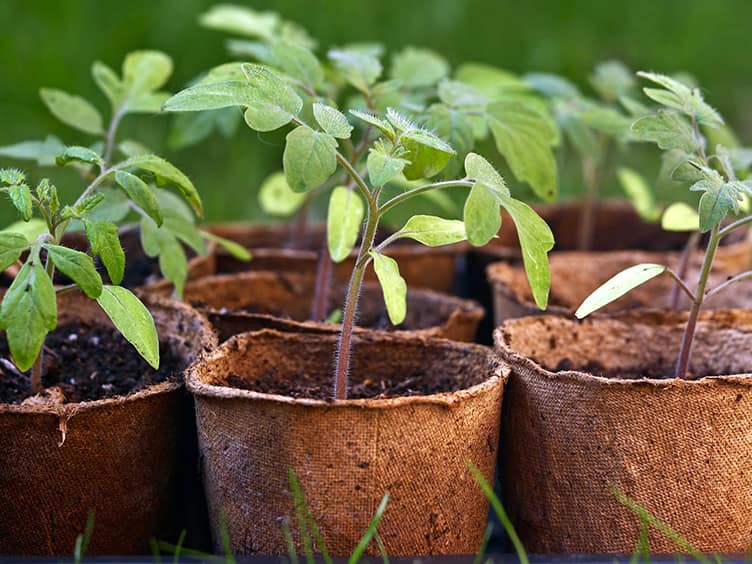
Tropical fruits and citrus are ready to pick in warmer areas. Strawberries will be flowering and fruiting fairly well in most areas, although it may still be a little early for good crops in southern areas. Honeydew melon, watermelon and cantaloupe are still in season in hot, dry regions.
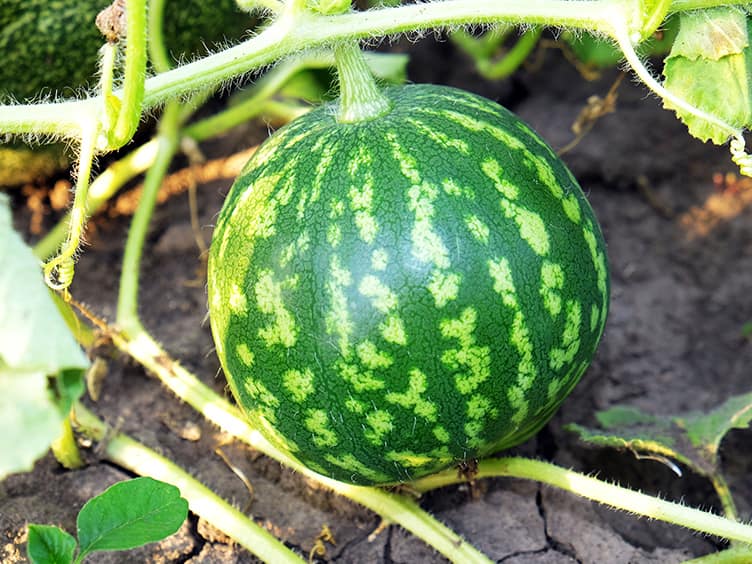
Evergreen fruiting plants such as passionfruit vines and citrus can be safely planted in most areas now the likelihood of frosts is minimal. Potted deciduous fruit trees and vines (blackberries, raspberries, kiwifruit) can be transplanted this month. The range available may include:
Continue planting gladiolus corms every few weeks throughout November. Dahlia tubers should also be planted this month – divide clumps and plant tubers singly, making sure each has a growth eye. Hammer in stakes about 450-600mm apart and plant one tuber at the base of each to provide support as the plants grow. Green cuttings taken a couple of months ago should have good root systems by now and can be planted out.
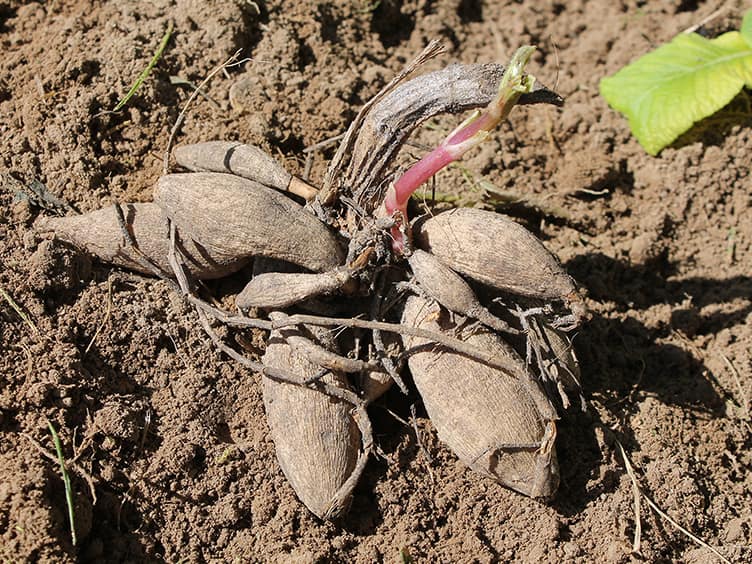
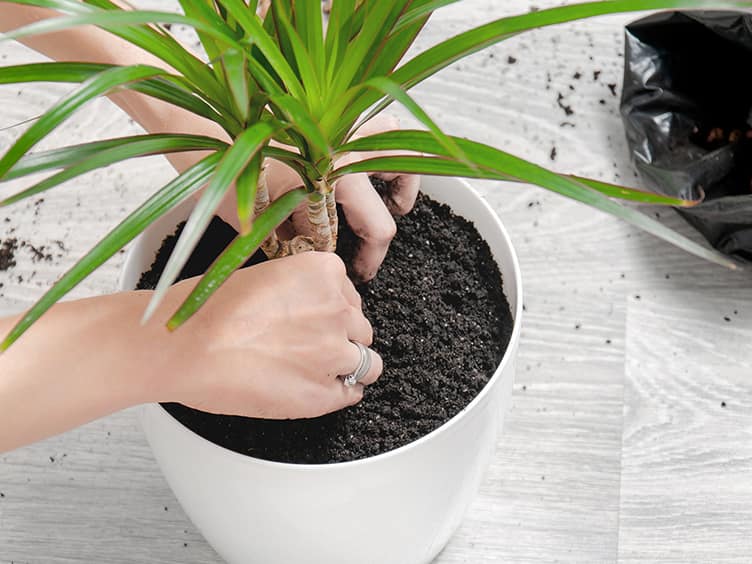
Regular mowing will keep existing lawns looking neat. Raise the cutting height to leave the grass a little longer and protect the crowns and runners of grasses from the increasing heat of the sun. A longer, thicker sward also helps keep the soil, and roots, cooler. Leaving the clippings on the lawn will also help, although it may look a little messy.
During dry spells, water the lawn well at least once a week (if permitted by local water authorities). Light sprinkles on the grass every day or so not only waste water but encourage the roots to the surface.
